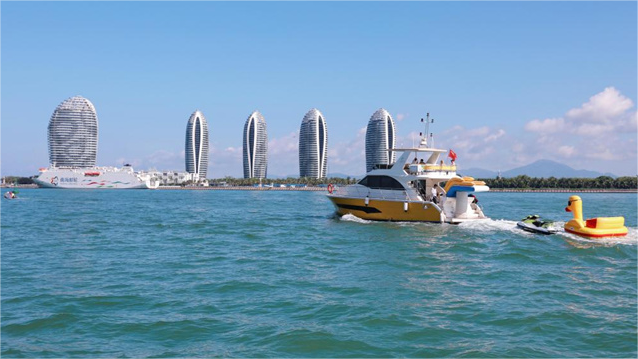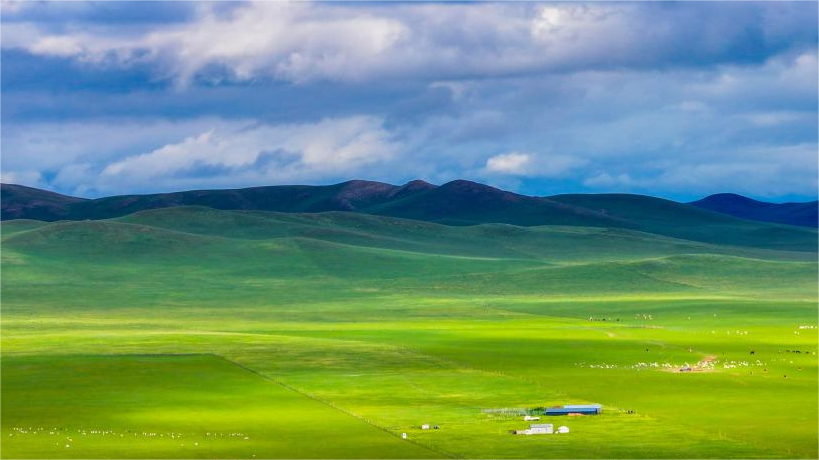China advances carbon-sink trading to accelerate green transition

An aerial drone photo taken on July 11, 2024 shows a vehicle running in Shangganling stream forest park in Yichun, northeast China's Heilongjiang Province. (Xinhua/Zhang Tao)
HARBIN, July 18 (Xinhua) -- Northeast China's Heilongjiang Province, renowned for its rich forest resources, has launched a forestry carbon-sink trading system, as part of the country's broader efforts to achieve its dual carbon goals.
"As the first provincial-level forestry carbon-sink trading system initiated by forestry and grassland authorities, it provides a good reference for forestry carbon-sink trading efforts in other provinces," said Guo Qingjun, an official of the National Forestry and Grassland Administration, at the launch ceremony on Wednesday.
A carbon sink is anything that absorbs more carbon from the atmosphere than it releases, and forests are typically carbon sinks.
Heilongjiang boasts a forest area of 20.12 million hectares, accounting for 8.7 percent of China's total and ranking third in the country. The province's local forest ecosystem has a carbon reserve of about 5.7 billion tonnes.
In addition to Heilongjiang, provinces such as Fujian, Guangdong and Shandong have also adopted forestry carbon sink practices to promote green transformation.
China has set ambitious goals of achieving a carbon peak by 2030 and carbon neutrality by 2060, taking a prominent role in the global fight against climate change.
"The development of forestry carbon-sink projects not only enhances the ecological environment but also increases the supply of ecological products and services, fostering a positive interaction between ecological protection and economic development," said Li Jian, an academician of the Chinese Academy of Engineering.
Forestry carbon-sink trading is one of many approaches China is taking to pursue a green path, demonstrating the country's steadfast commitment to ecological priorities and low-carbon development.
In line with the dual carbon goals, China has made unwavering efforts to develop its carbon trading market. It has piloted carbon emission trading in multiple regions since 2011 to explore market-based mechanisms to control greenhouse gas emissions. A national carbon emission trading market was officially launched in 2021.
As of Wednesday, the cumulative volume of carbon emission allowances in the national carbon market stood at about 465 million tonnes, with the turnover amounting to nearly 27 billion yuan (about 3.79 billion U.S. dollars), according to data.
In July, China's tropical island province of Hainan saw the transaction of the country's first-ever carbon-sink trading project located in a national park's tropical rainforest.
Three companies have signed a cooperation agreement with the Diaoluo Mountain branch of the Management Office of the National Park of Hainan Tropical Rainforest for the purchase of a total of 350,000 yuan worth of tropical rainforest carbon sinks, according to the provincial forestry department.
The carbon sinks traded originate from the Diaoluo Mountain area of the national park, where Merremia boisiana, a vigorous invasive vine harmful to trees, was removed from 667 hectares of forest.
The removal of the vines will help accelerate the growth of trees, resulting in an estimated reduction of 109,000 tonnes of carbon dioxide emissions over the next 20 years, with the carbon-sink trading value exceeding 10 million yuan.
The three companies purchased carbon sinks for 150,000 yuan, 100,000 yuan and 100,000 yuan, respectively, to offset their carbon emissions and contribute to carbon neutrality.
According to Niu Guimin, a researcher at the Tianjin Academy of Social Sciences, promoting diversified carbon trading varieties and methods is considered a prevailing trend.
"Environmental protection and afforestation are China's contributions to the world. Initiatives like forestry carbon-sink trading reveal a promising future where the integration of ecological value and economic value becomes apparent," Niu said.
Photos
Related Stories
- Chinese scientists design new cooling material for buildings to reduce carbon emissions
- Village in SE China turns green mountains into 'invaluable assets'
- Chinese national park transacts tropical rainforest carbon-sink trading
- Launching ceremony of forestry carbon-sink trading system of Heilongjiang held in Harbin
- CRRC releases world's first report on carbon footprint of pure electric locomotives
- Academy report urges more focus on consumption side of carbon emissions
Copyright © 2024 People's Daily Online. All Rights Reserved.









